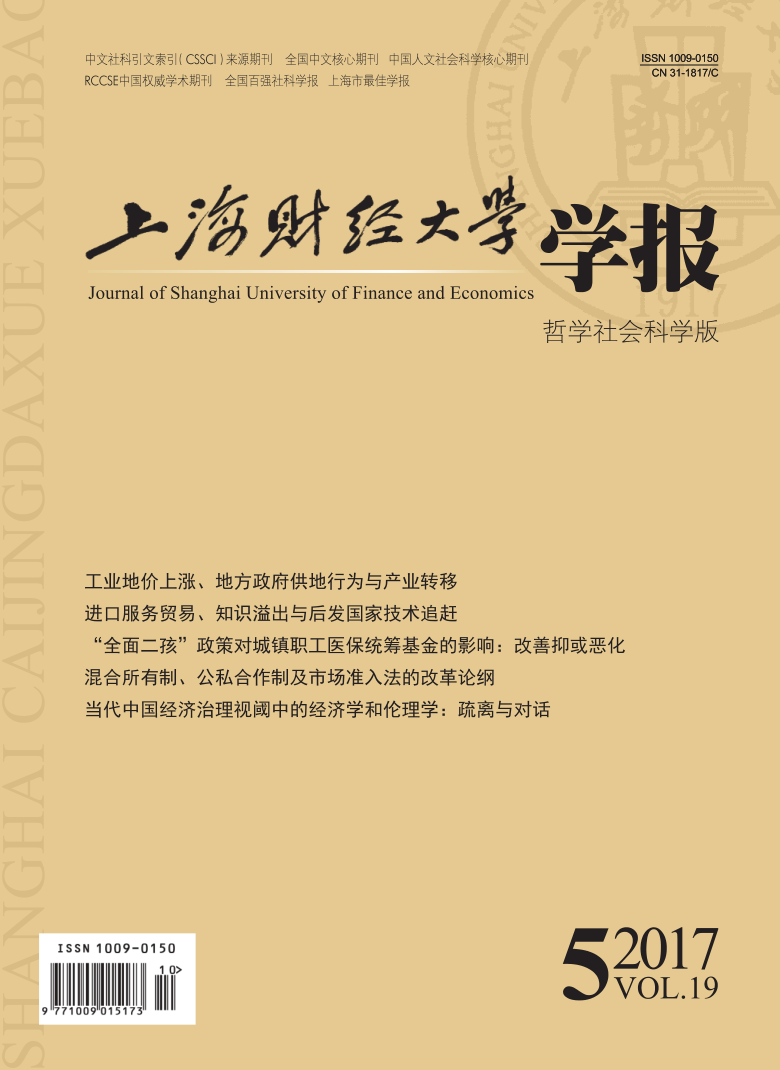外来流动人口与本地人口的社会融合是构建城市和谐社会的根基。流动人口的住房与社区选择不仅关系切身福利,也是其社会融合程度的重要体现。文章基于2014年中国流动人口动态监测数据,通过构建多维度合成的社会融合指标,采用克服内生性偏误的联立方程模型,分析了社会融合对流动人口居住选择行为的影响。研究发现,社会融合对流动人口的居住选择的影响显著,即更好的社会融合会增加流动人口住房自有的概率、提高流动人口居住在正规社区的概率或增加其住房消费水平。研究结果可为改善流动人口的社会融合、优化居住资源的空间配置以及引导流动人口合理的居住选择提供依据。
社会融合如何影响流动人口的居住选择——基于2014年全国流动人口监测数据的研究
摘要
参考文献
22.0 陈强. 高级计量经济学及Stata应用[M]. 2版. 北京: 高等教育出版社, 2014.
24.0 朱宇, 林李月. 流动人口的流迁模式与社会保护: 从" 城市融入”到" 社会融入”[J]. 地理科学, 2011, (3).0 DOI:10.11820/dlkxjz.2011.03.001
27.0 Bradley D, Green R K, Surette B J. The impacts of remittances, residency status and financial attachment on housing tenure for Mexican-Heritage Americans: Inferences from a new survey[J]. Real Estate Economics, 2007, 35(4): 451–478. DOI:10.1111/reec.2007.35.issue-4
28.0 Buller H, Hoggart K. The social integration of British home owners into French rural communities[J]. Journal of Rural Studies, 1994, 10(2): 197–210. DOI:10.1016/0743-0167(94)90030-2
29.0 Chen Y, Wang J F. Social integration of new-generation migrants in Shanghai China[J]. Habitat International, 2015, 49: 419–425. DOI:10.1016/j.habitatint.2015.06.014
30.0 Clark W A V, Onaka J L. An empirical test of a joint model of residential mobility and housing choice[J]. Environment & Planning A, 1985, 17(7): 915–930.
31.0 Fu Y M, Tse D K, Zhou N. Housing choice behavior of urban workers in China’s transition to a housing market[J]. Journal of Urban Economics, 2000, 47(1): 61–87. DOI:10.1006/juec.1999.2133
32.0 Gan X L, Zuo J, Chang R D, et al. Exploring the determinants of migrant workers’ housing tenure choice towards public rental housing: A case study in Chongqing, China[J]. Habitat International, 2016, 58: 118–126. DOI:10.1016/j.habitatint.2016.10.007
33.0 Heckman J J. Detecting discrimination[J]. Journal of Economic Perspectives, 1998, 12(2): 101–116. DOI:10.1257/jep.12.2.101
34.0 Herrero J, Fuente A, Gracia E. Covariates of subjective well-being among Latin American immigrants in Spain: The role of social integration in the community[J]. Journal of Community Psychology, 2011, 39(7): 761–775. DOI:10.1002/jcop.v39.7
35.0 Howarth C. So, you’re from Brixton? The struggle for recognition and esteem in a stigmatized community[J]. Ethnicities, 2002, 2(2): 237–260. DOI:10.1177/1468796802002002658
36.0 Hyra D. Greasing the wheels of social integration: Housing and beyond in mixed-income, mixed-race neighborhoods[J]. Housing Policy Debate, 2015, 25(4): 785–788. DOI:10.1080/10511482.2015.1042206
37.0 Jiang L W. Living conditions of the floating population in Urban China[J]. Housing Studies, 2006, 21(5): 719–744. DOI:10.1080/02673030600807431
38.0 Kearns A, Whitley E. Getting there? The effects of functional factors, time and place on the social integration of migrants[J]. Journal of Ethnic & Migration Studies, 2015, 41(13): 2105–2129.
39.0 Lancaster K J. A new approach to consumer theory[J]. Journal of Political Economy, 1966, 74(2): 132–157. DOI:10.1086/259131
40.0 Maddala G S. Limited-dependent and qualitative variables in econometrics[M]. Cambridge England Cambridge University Press, 1983.
41.0 Musterd S, Deurloo R. Unstable immigrant concentrations in amsterdam: Spatial segregation and integration of newcomers[J]. Housing Studies, 2002, 17(3): 487–503. DOI:10.1080/02673030220134962
42.0 Nelson J M. Sojourners versus new urbanites: Causes and consequences of temporary versus permanent cityward migration in developing countries[J]. Economic Development and Cultural Change, 1976, 24(4): 721–757. DOI:10.1086/450916
43.0 Painter G, Gabriel S, Myers D. Race, immigrant status, and housing tenure choice[J]. Journal of Urban Economics, 2001, 49(1): 150–167. DOI:10.1006/juec.2000.2188
44.0 Park R E. Human migration and the marginal man[J]. American Journal of Sociology, 1928, 33(6): 881–893. DOI:10.1086/214592
45.0 Ratchford B T. The new economic theory of consumer behavior: An interpretive essay[J]. Journal of Consumer Research, 1975, 2(2): 65–75. DOI:10.1086/jcr.1975.2.issue-2
46.0 Rojas V, Iii L B, Sunil T S. US retirement migration to mexico: Understanding issues of adaptation, networking, and social integration[J]. Journal of International Migration and Integration, 2014, 15(2): 257–273. DOI:10.1007/s12134-013-0278-4
47.0 Rosen S. Hedonic prices and implicit markets: Product differentiation in pure competition[J]. Journal of Political Economy, 1974, 82(1): 34–55. DOI:10.1086/260169
48.0 Seifert W. Occupational and economic mobility and social integration of mediterranean migrants in Germany[J]. European Journal of Population, 1997, 13(1): 1–16. DOI:10.1023/A:1005739504981
49.0 Tu Y, Li P, Qiu L. Housing search and housing choice in urban China[J]. Urban Studies, 2016.
50.0 Wang F, Zuo X. Inside China’s cities: Institutional barriers and opportunities for urban migrants[J]. American Economic Review, 1999, 89(2): 276–280. DOI:10.1257/aer.89.2.276
51.0 Wang Z, Zhang F Z, Wu F L. Intergroup neighbouring in urban China: Implications for the social integration of migrants[J]. Urban Studies, 2016, 53(4): 651–668. DOI:10.1177/0042098014568068
52.0 Zhang Q. The impact of occupational characteristics on income differences among urban employees in China[J]. Social Sciences in China, 2011, 32(3): 145–160. DOI:10.1080/02529203.2011.598306
53.0 Zhu Y. China’s floating population and their settlement intention in the cities: Beyond the Hukou reform[J]. Habitat International, 2007, 31(1): 65–76. DOI:10.1016/j.habitatint.2006.04.002
引用本文
邹静, 陈杰, 王洪卫. 社会融合如何影响流动人口的居住选择——基于2014年全国流动人口监测数据的研究[J]. 上海财经大学学报, 2017, 19(5): 64–79.
导出参考文献,格式为:





 , 1
, 1 10782
10782  12690
12690

